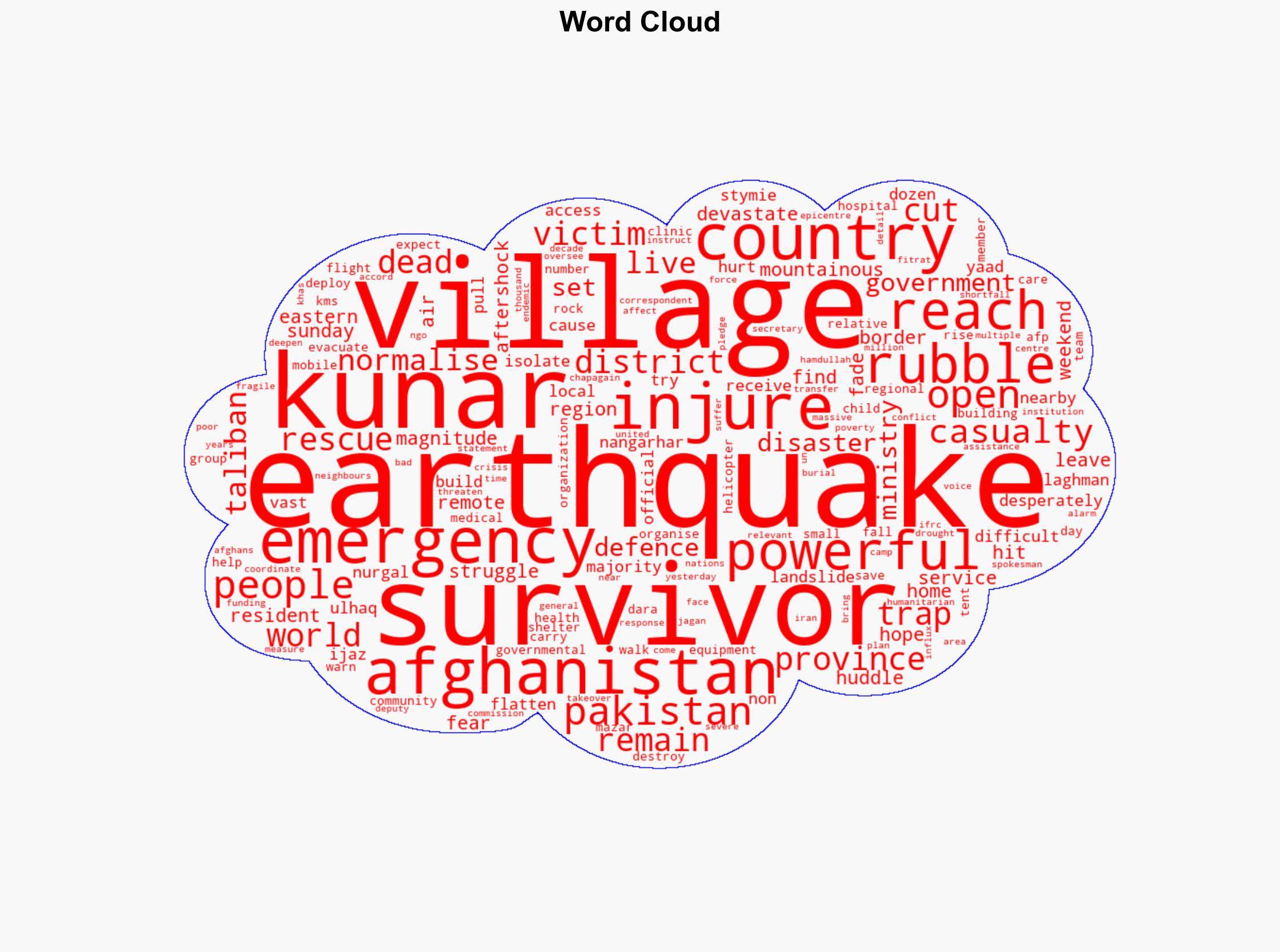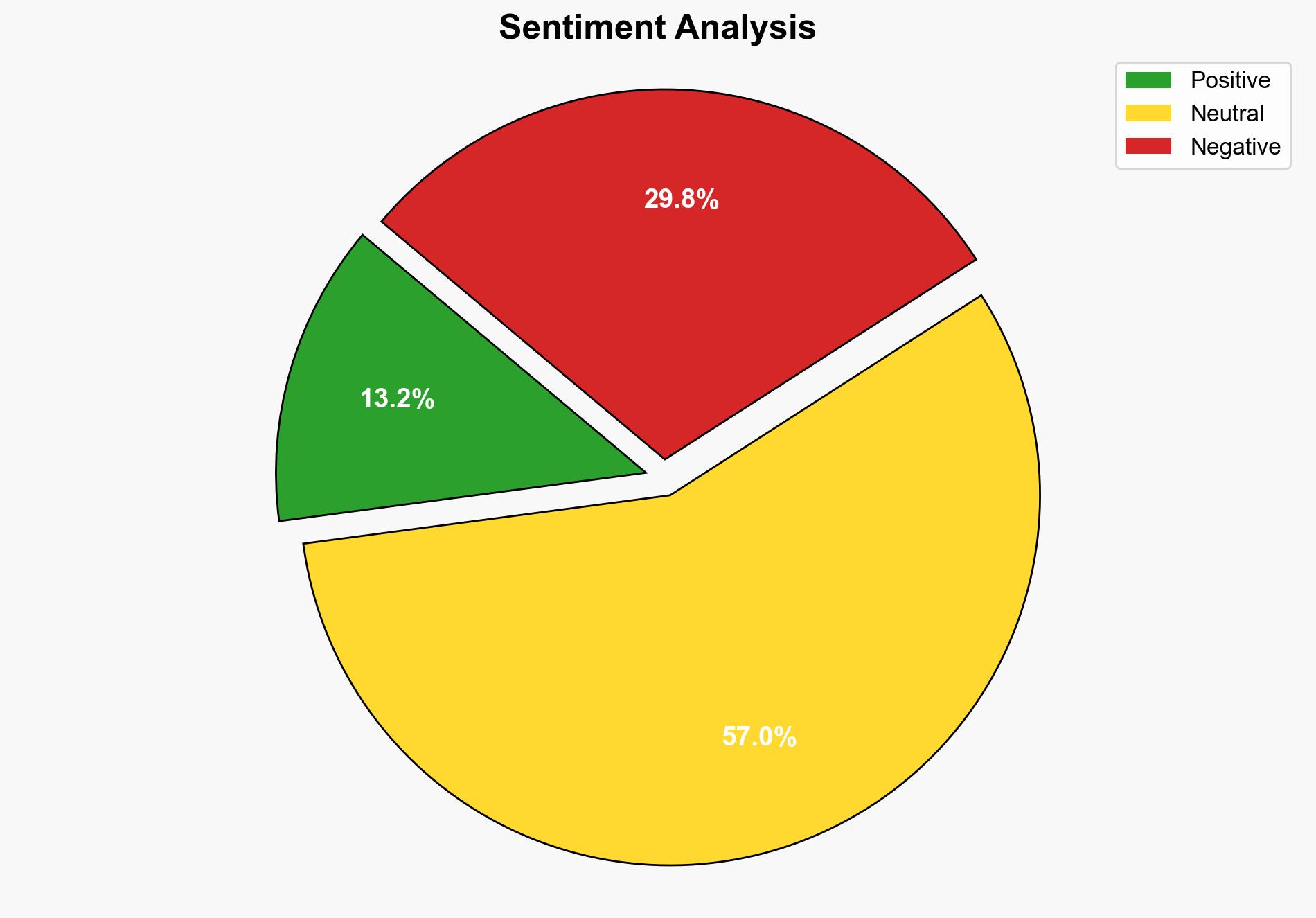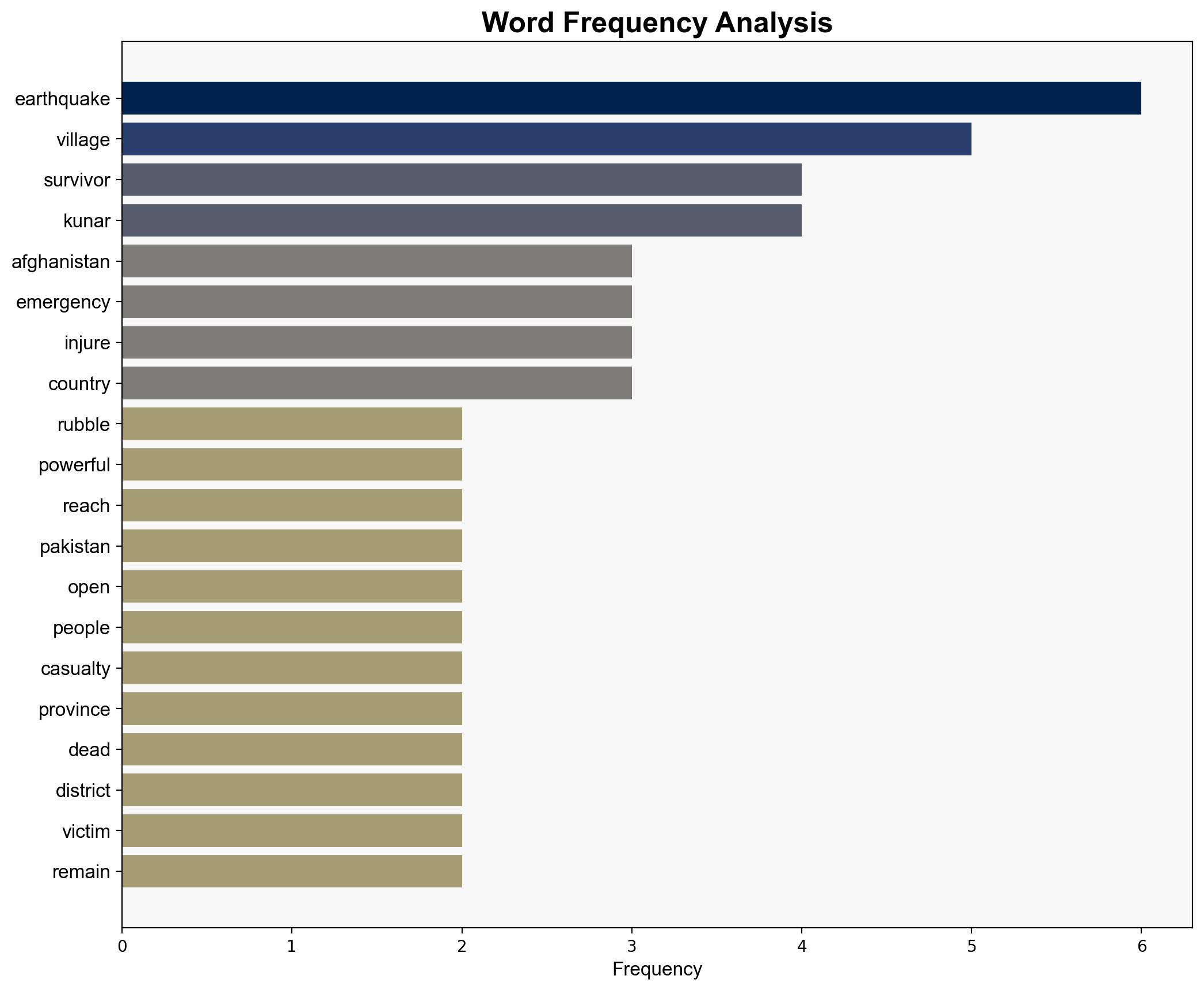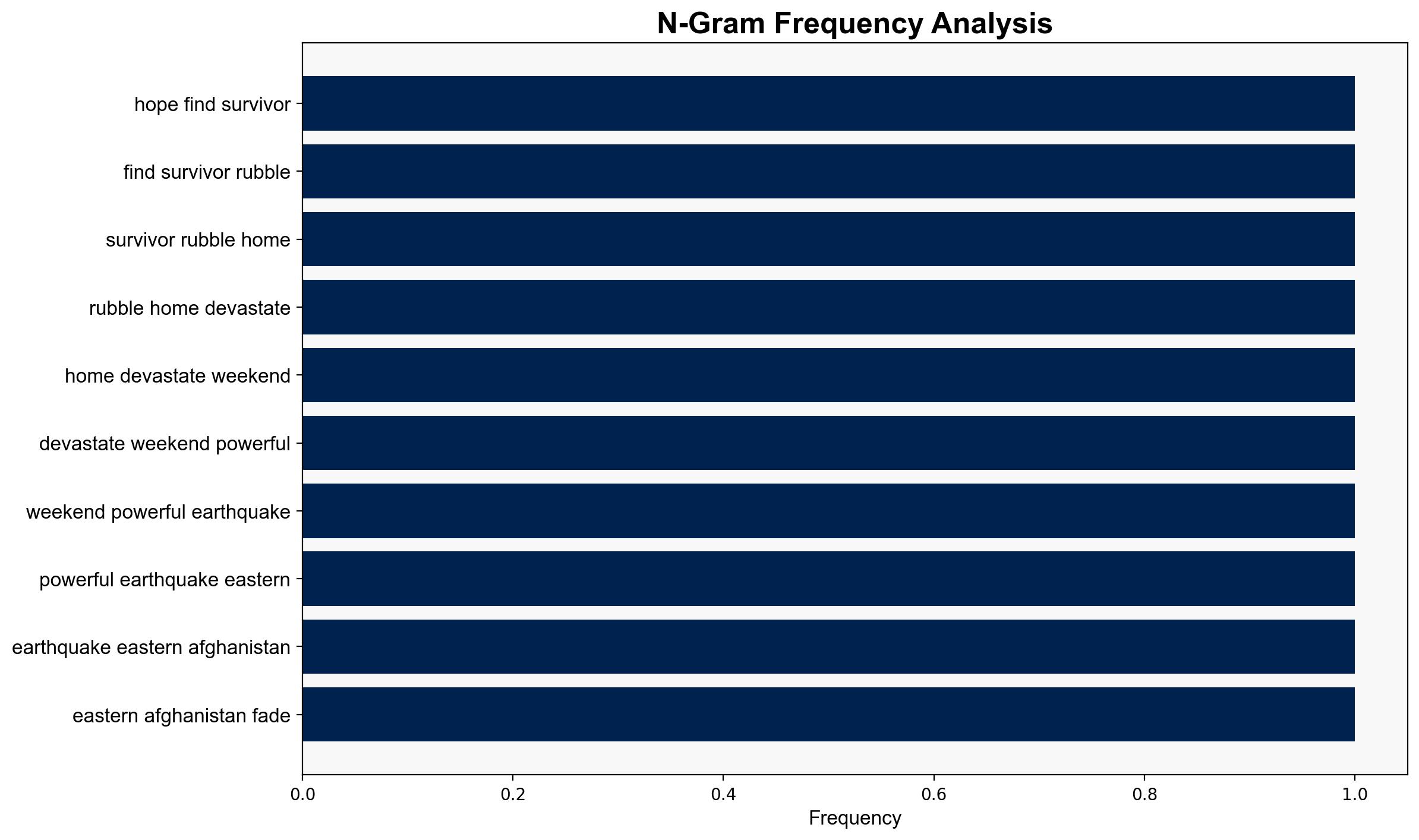Hope of finding survivors after Afghan quake dwindles – RTE
Published on: 2025-09-03
Intelligence Report: Hope of finding survivors after Afghan quake dwindles – RTE
1. BLUF (Bottom Line Up Front)
The likelihood of finding additional survivors in the aftermath of the Afghan earthquake is diminishing rapidly. The most supported hypothesis is that logistical challenges and environmental conditions will significantly hinder rescue efforts, leading to a higher casualty count. Confidence level: High. Recommended action: Prioritize international coordination to enhance logistical support and expedite aid delivery.
2. Competing Hypotheses
1. **Hypothesis A**: The rescue operations will be severely hampered by logistical challenges and environmental conditions, leading to a significant increase in casualties.
– **Supporting Evidence**: The report highlights difficulties in reaching remote villages due to landslides and rockfalls. The World Health Organization expects casualty numbers to rise as many remain trapped.
2. **Hypothesis B**: Despite initial challenges, international aid and local efforts will successfully mitigate the disaster’s impact, leading to a stabilization of the situation.
– **Supporting Evidence**: The involvement of non-governmental organizations and the Afghan government’s efforts to deploy helicopters and medical teams suggest potential for effective intervention.
Using ACH 2.0, Hypothesis A is better supported due to the immediate and severe logistical barriers outlined in the report, which outweigh the potential benefits of international aid under current conditions.
3. Key Assumptions and Red Flags
– **Assumptions**: It is assumed that the current logistical challenges will persist without significant improvement. Another assumption is that international aid will not be mobilized quickly enough to make a substantial difference.
– **Red Flags**: The report lacks detailed information on the current capacity and readiness of international aid organizations. There is also no mention of the potential impact of regional geopolitical tensions on aid delivery.
4. Implications and Strategic Risks
The situation poses a risk of exacerbating Afghanistan’s existing humanitarian crisis, potentially leading to increased instability in the region. The economic impact of the disaster could further strain the already fragile Afghan economy, leading to increased migration pressures on neighboring countries. There is also a risk of exploitation by extremist groups, who may use the chaos to gain influence.
5. Recommendations and Outlook
- **Immediate Action**: Facilitate international coordination to overcome logistical barriers and expedite aid delivery.
- **Short-term**: Establish a regional task force to monitor and respond to emerging threats related to the disaster.
- **Long-term**: Develop infrastructure resilience programs to mitigate future disaster impacts.
- **Scenario Projections**:
– **Best Case**: Rapid international response stabilizes the situation, minimizing additional casualties.
– **Worst Case**: Continued logistical challenges lead to a humanitarian catastrophe, with significant regional destabilization.
– **Most Likely**: A moderate increase in casualties with gradual stabilization as aid trickles in.
6. Key Individuals and Entities
– Ijaz Ulhaq Yaad (Local official)
– Hamdullah Fitrat (Deputy government spokesman)
– Jagan Chapagain (IFRC Secretary General)
7. Thematic Tags
national security threats, humanitarian crisis, disaster response, regional focus





